This article previously appeared on Crossfader
ROCK STEADY ROW is a hyper-stylized, western action-comedy, and ultimately a labor of love with lovely results. It’s also the first feature film for director Trevor Stevens and his collaborators, most of who recently graduated from Chapman University. It’s fun, it’s crazy, it’s emotional, it won the Narrative Feature Grand Jury Prize and the Audience Award for Best Narrative Feature at Slamdance Film Festival, and we got Trevor on the phone to talk about it.
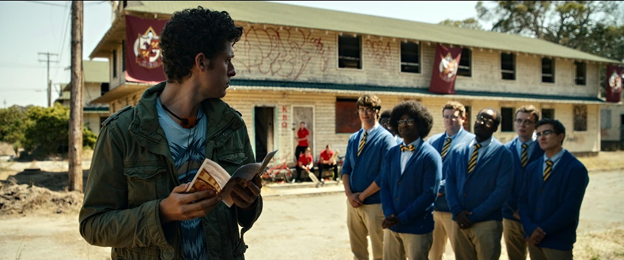
Sam: Good morning Trevor! Can you give us a brief synopsis of the film?
Trevor: Hi, of course! ROCK STEADY ROW is a spaghetti western in a college setting that exaggerates issues on a college campus. We follow the story of the freshman (Heston Horwin) who arrives on campus and gets his bike stolen by one of the fraternities. He has to find a way to get his bike back, and in the process, with the help of a young, female journalist, Piper (Diamond White), cracks the corruption in the school.
Sam: Your film was very stylized and you’ve previously mentioned an influence from Spaghetti Westerns and Kurosawa. It also seems like there was some influence from anime. Can you talk about those and any other influences on ROCK STEADY ROW?
Trevor: We had a lot of references for the film, but the main heart and soul of the story was YOJIMBO and FIST FULL OF DOLLARS. Both are brother films, samurai vs. cowboy, and sword vs. gun. Same deal was done with LAST MAN STANDING. We wanted to follow suit in ROCK STEADY’s college setting, with pencils, paddles, and bikes. In terms of style, if you look at samurai films, big guys in hats and big mallets, both are similar in terms of style and flair. Other influences were COWBOY BEBOP, along with John Carpenter’s ESCAPE FROM NEW YORK. Both deal with style and action in a specific, hyper-stylized way. Another thing we kept from the audience, and is similar to the previously mentioned films, was the name of the main character, “the freshman.” We did this so the main character was more mythical.
Sam: Any other ways you wanted to make the films a legend?
Trevor: Once we got more of the references down, we knew that in order to sell the vision of ROCK STEADY ROW to be an exaggerated college setting, we needed a clear backstory. So, one of our biggest references was MAD MAX 2: THE ROAD WARRIOR. ROAD WARRIOR had a very complicated job in telling the audience what universe they were getting into before they saw the film. I mean, can you imagine STAR WARS without the scrolling text? All of a sudden you’re running through space with the empire and the rebels are at war? So, in STAR WARS, you have a long, long time ago in a galaxy far, far away. MAD MAX tells you war has gone down, this is the future, and people survive through motorcycles and cars. With ROCK STEADY ROW, we had animation and narration. You’re allowed to say let’s have some fun. A lot of young people die in the film; we want people to get that it’s just satire, that here college is a soul-sucking institution, draining from the poor and giving to the rich. If we could get that satire into people’s skulls from the start, we were happy. Our animator, Lisa Wu, she painted something that had a storybook look, which started the film and ended it. Tom McLoughlin as the janitor narrates the film, where you can tell he has had the full experience as a student and now alumni. This is a perfect voice for it, because this is someone who was never able to pay off all of his debt and has to sell his soul and life, hair overgrown. This worked perfectly for the fable, the idea of the prisoner . . . you know, like the BEAUTY AND THE BEAST, all the people that worked in the mansion before the curse was destroyed, same idea with Tom—huge influence borrowing from fairytales.
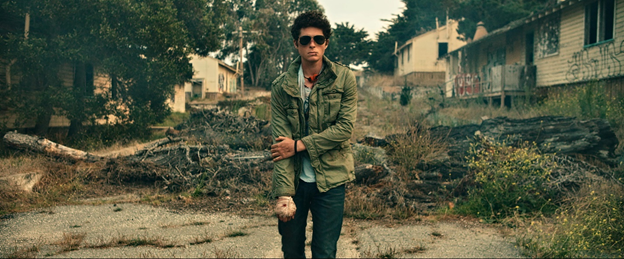
The Freshman on “the row,” with composition hearkening back to its Japanese and western roots.
Sam: You had a lot of close friends involved on the project. Can you talk about how important that group was in regards to transitioning from school to the real world?
Trevor: Oh my god, yes. You know, one of the interviewers we had up here said: “If you did one thing right, what was it?” It was the team. I’m very proud to work with people I know and people able to bust their asses to make sure this happened. This group and people from Chapman University’s campus made this in the past year-and-a-half, but it has been developing since I’ve grown up at Chapman. Every person I’ve met along the way has helped with my shorts and projects. I’ve definitely met new people, but having that huge base of a support team was crucial. My experience with Nico (ROCK STEADY ROW’s cinematographer) was vital, he shot my films in school. Sometimes I don’t even have to talk to him on set because he just understands my flavor. I give him a little smile and we both just go for it. Our whole group is 85 percent Chapman students or alumni from Chapman.That’s amazing! How many times do you get to make your first feature with your friends? Chapman supports this so much, so we got to experiment and fuck up, and do all these amazing things. There is something in every single one of our shorts that was utilized and pushed further in ROCK STEADY ROW. Without that ability to do so and without those people, it would not be possible with the limited resources we had to make the feature. We were a little empty handed with the budget, and ample in spirit.
Sam: In the best way possible, your film premiered at Slamdance and not Sundance; what differences have you noticed between the two festivals in regards to culture, opportunities, and overall vibes?
Trevor: To be completely frank, I’ve always been a huge admirer of Sundance, but I couldn’t see our film premiering anywhere other than Slamdance. Because Slamdance is about filmmakers doing their first feature and getting their hands dirty. I just feel like a lot of Sundance films are very unique, but Slamdance is somewhere to try something crazy. Slamdance is an environment with collaborative filmmakers and it’s a place that is so supportive. No one at Slamdance wants to push other filmmakers out. It just felt more ballsy. I guess in our case, Slamdance felt so much more unique in terms of people and the vibes and is just . . . a place that I’m gonna see some crazy shit. I wanted that to be a place for ROCK STEADY ROW. Sundance has a polish and Slamdance is the grungy rock and roll concert down the street. When we first got there we were comparing Park City’s main street to the row where we had Slamdance to one side and Sundance to the other. Slamdance is the rebels and Sundance is the galactic empire–like at Slamdance we have something else for ya, we got the Luke Skywalkers.
Sam: For all who don’t know, can you explain what “the row” is?
Trevor: Anyone who has been on college campuses understands that there are fraternity rows. The idea of the row is that it’s a subsection of college; in ROCK STEADY it’s no man’s land, it’s a place that you don’t cross unless you want to be killed on the street. We brought the same visual from FIST FULL OF DOLLARS and YOJIMBO where there’s this small town and no one walks around, no one walks around this street that lies between two warrior houses. You have the “Kappas” on the left and the “High Society” on the right. Even the color palette was strong: blue on the right and red on the left. It’s a strip of land that divides both fraternities.
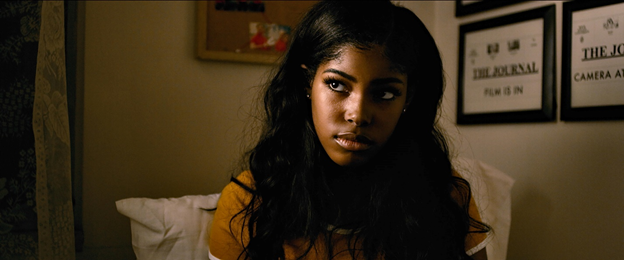
Piper, one of the film’s central female characters
Sam: There are messages of inclusion, diversity, and denouncements of sexism and hate within the film. What led you to delve into these concepts throughout ROCK STEADY ROW.
Trevor: My writer Bomani and I felt that it was very important for us to not ignore the social commentary currently going on within college campuses. Our first project was meant to be a fun, enjoyable, and silly film that was off-the-walls in a college setting. But we couldn’t also ignore all that has happened with Brock Turner, sexual assault, etc. Although we were huge admirers of YOJIMBO and FIST FULL OF DOLLARS, both characters do very awful things. To be fair, they are anti-heroes, in that they are out for themselves and end up doing good in the end, but in both films they save the maiden character, and both maidens are held hostage. In ROCK STEADY ROW, a fraternity holds the maiden hostage, and then our character has a change of conscience and saves them. But here we wanted the maiden to come back and kick some ass. This came in the form of a lost sorority, the idea of a college campus that was completely misogynist and now there is a resurgence of feminism. In the freshman’s quest to get his bike back, he gets partnered with Piper who is trying to tell the truth. She is also trying to reawaken the sororities, the last hope, Princess Leia (laughs), kind of the last hope for the rebels. The main character gets smacked around, and must make a decision on who to ally with. Now the story has a “mansel in distress.” We were kind of tired of the damsel in distress. We kind of wanted to make sure that our central male character wasn’t the only one who came in to save the day, and we wanted to see our main character come in with strong female characters and kick Brock Turner’s ass! We’ve been seeing a lot of these characters and we wanted to address that.
Sam: If there’s one thing that you hope people take away from the film, what would that be?
Trevor: I hope they feel they went on a rollercoaster ride for about an hour-and-17 minutes with a splash of social commentary as well. At the end of the day I hope they enjoyed themselves.
Sam: Within the next few weeks or months is there anywhere people can see ROCK STEADY?
Trevor: What I can say is everything is TBD, follow Rock Steady University, follow our social media, I know that we do have a couple more festivals to look for, we have some talks with possible ideas of distribution in the next few weeks. Keep an eye out.
Follow ROCK STEADY ROW on:
Facebook: https://www.facebook.com/rocksteadyrow/
Twitter and Instagram: @rocksteady_u


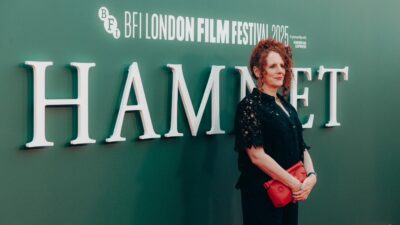







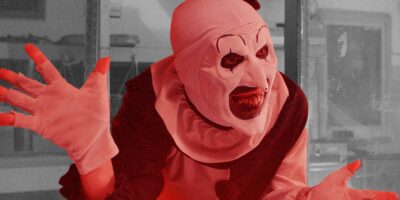





Comments